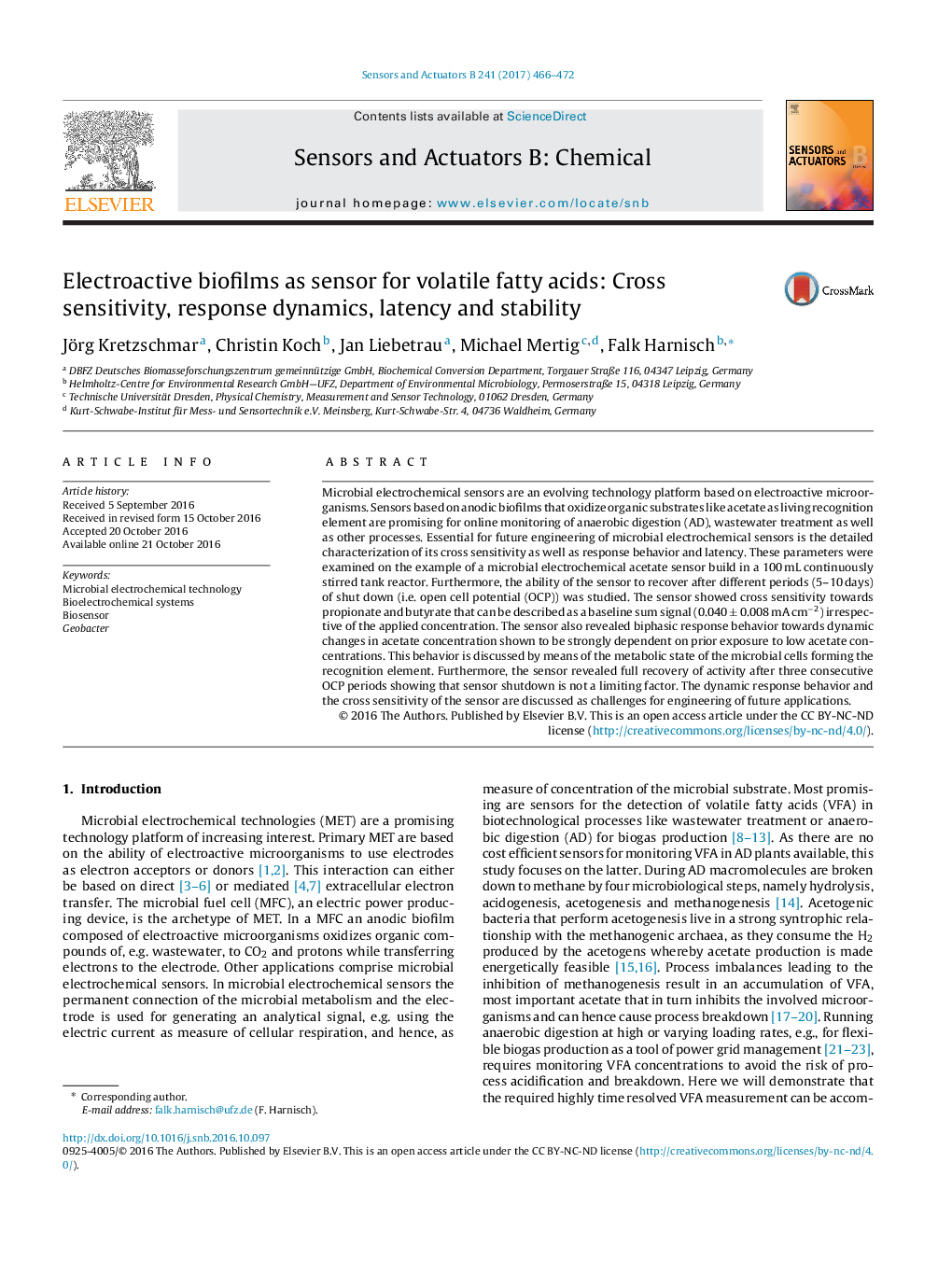| Article ID | Journal | Published Year | Pages | File Type |
|---|---|---|---|---|
| 5010116 | Sensors and Actuators B: Chemical | 2017 | 7 Pages |
â¢An amperometric microbial electrochemical sensor for volatile fatty acids (VFA) is characterized.â¢Characterization included cross sensitivity as well as response behavior, latency and recovery.â¢A biphasic response behavior was shown to depend on the previous acetate exposure.â¢Future engineering on sensor stability, dynamic response behavior and cross sensitivity are discussed.
Microbial electrochemical sensors are an evolving technology platform based on electroactive microorganisms. Sensors based on anodic biofilms that oxidize organic substrates like acetate as living recognition element are promising for online monitoring of anaerobic digestion (AD), wastewater treatment as well as other processes. Essential for future engineering of microbial electrochemical sensors is the detailed characterization of its cross sensitivity as well as response behavior and latency. These parameters were examined on the example of a microbial electrochemical acetate sensor build in a 100 mL continuously stirred tank reactor. Furthermore, the ability of the sensor to recover after different periods (5-10 days) of shut down (i.e. open cell potential (OCP)) was studied. The sensor showed cross sensitivity towards propionate and butyrate that can be described as a baseline sum signal (0.040 ± 0.008 mA cmâ2) irrespective of the applied concentration. The sensor also revealed biphasic response behavior towards dynamic changes in acetate concentration shown to be strongly dependent on prior exposure to low acetate concentrations. This behavior is discussed by means of the metabolic state of the microbial cells forming the recognition element. Furthermore, the sensor revealed full recovery of activity after three consecutive OCP periods showing that sensor shutdown is not a limiting factor. The dynamic response behavior and the cross sensitivity of the sensor are discussed as challenges for engineering of future applications.
